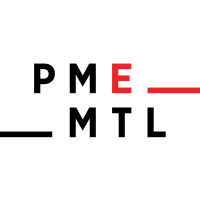North American exporters have bid farewell to NAFTA and started to get used to a new trade deal that doesn’t quite roll off the tongue so easily – the Canada-United States-Mexico Agreement (CUSMA), which came into effect on July 1, 2020. Like its predecessor, CUSMA regulates trade between Canada, the United States and Mexico. The question is: What are the real changes brought about by this Agreement that affect Québec exporters? Here is an overview of a number of points.
Certification
Under NAFTA, each exported good had to be accompanied by proof that it met the established standards, in the form of a NAFTA certificate. There are no longer any NAFTA certificates to fill out, but a “certification of origin” must be carried out. By way of example, there are nine elements that must be indicated on the commercial invoice for shipments to the United States with a value in excess of USD 2,500.
Rules of origin
The rules of origin define the percentage of content originating in the signing countries that must be present in an exported good in order for it to be exempt from customs duties and export taxes. Some percentages have changed under CUSMA. For all goods (with a few rare exceptions), and especially in the case of textiles, the percentage of foreign (non-originating) content that can be integrated into a fabric has increased from 7% to 10%, which means that the rules are a little less stringent on this specific point. However, according to Christian Sivière, an Import-Export Consultant, “it’s an improvement, but it’s nothing spectacular, because all it does is harmonize the percentage of foreign content with the CETA and the Trans Pacific Partnership, which have been at 10% since they came into effect in 2017 and 2018 respectively”. He is of the opinion that the impact is more significant on the following industries:
- Auto parts: Increase in the percentage of regional content,
- Chemical industry: Introduction of 8 new rules,
- Clothing industry to a lesser extent, because they must now use originating sewing thread, narrow elastic and pocket bag fabric, which was not previously the case.
On the other hand, the impact is more positive for the pharmaceutical industry, with Canada having agreed to extend the protection period from 8 years to 10 years, which hinders the development of generic medications. This clause was removed during negotiations between Congress and the White House.
Intellectual property
Trade secrets, patents, copyrights – intellectual property is a wide-ranging subject that includes many items. NAFTA was signed in 1994, and there have been significant changes since then (e.g.: the pervasiveness of the Internet), so numerous updates were expected in this area. CUSMA goes a lot farther than NAFTA in terms of protecting creators and companies against the inappropriate use of their property. For example, the duration of copyrights under CUSMA is extended to 70 years following the death of the author, instead of 50 years.
The de minimis threshold
The de minimis threshold is the maximum value at which an exported good can be produced while remaining exempt from taxes. This threshold used to be $20 for a good coming from the United States to Canada, and $800 for a good going from Canada to the United States. The latter de minimis threshold remains unchanged, which means very little change for Canadian exporters. However, for purchases made by Canadians in the United States, the limit has been increased. This means that Québec consumers can now pay less for online purchases from American retailers. More specifically, goods valued at up to CAN 40 are no longer subject to duties and taxes, and goods valued at between $40 and $150 are no longer subject to customs duties, although federal taxes apply.
Public procurement
In terms of public contracts, the prevailing conditions under NAFTA were not carried over to CUSMA. Instead, WTO rules now apply. Each American State has its own rules in this regard, but if we focus only on the US Federal Government, it is easy to see that public requests for proposals for goods are now less accessible to Québec exporters. In fact, under NAFTA, contracts were only open to Canadian suppliers once they surpassed USD 25, 000, but now, they have to surpass 182, 000 before local companies can submit a proposal.
The sunset clause
This new free-trade agreement is expected to be in effect for 16 years, but the sunset clause stipulates that the three countries will get together again in six years, in 2026, to discuss CUSMA and determine whether it remains relevant at that time. Of course, the essence of the Agreement is to reduce uncertainty with respect to exports as much as possible, which has been accomplished, because it has now been signed and ratified. Nevertheless, this sunset clause leaves room for a little bit of doubt among North American exporters, regardless of what some may say.
--
This article was written in collaboration with Julio Sequeira, Market Development Director at PME MTL Centre-Ouest, and Christian Sivière, Import-Export Consultant. Most of the information presented was gleaned from the Ministère de l’Économie et de l’Innovation.

